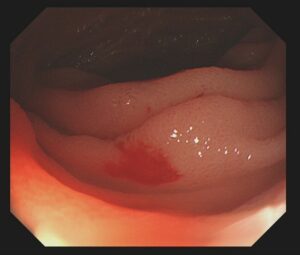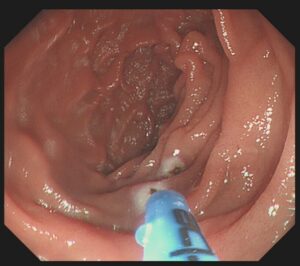Q&A
-
Answer is B.
Angioectasias are the most common single cause of obscure GI bleeding. A systematic review and meta-analysis of 227 studies reported that angioectasia was the identified cause in 50% of cases (Liao et al., 2010).
-
Answer is C.
Small-bowel VCE is recommended as the first line investigation in obscure gastrointestinal bleeding (Pennazio et al., 2015). This should be performed as soon as possible after the bleeding episode to maximise diagnostic yield. In acutely unwell patients, who are haemodynamically unstable, a CT angiography would be the most appropriate next investigation after a negative upper gastrointestinal endoscopy.
-
Answer is A.
This is a young, healthy patient with evidence of active small bowel bleeding and no contraindication to endoscopic management. DBE is therefore the most appropriate next step.
A DBE was performed which identified multiple bleeding angioectasia, likely in the jejunum. These were successfully treated with APC and the patient went on to make a good recovery.


Image 1: Bleeding angioectasia seen at DBE (top) followed by successful APC (bottom)